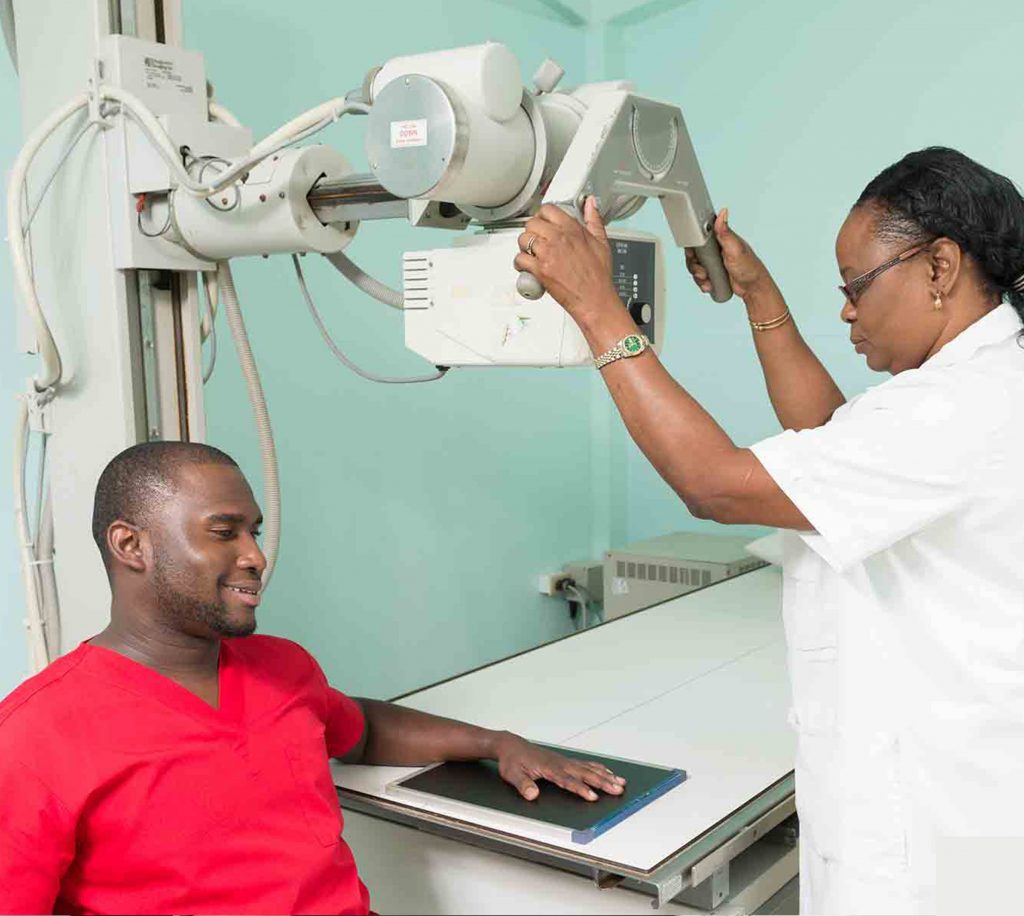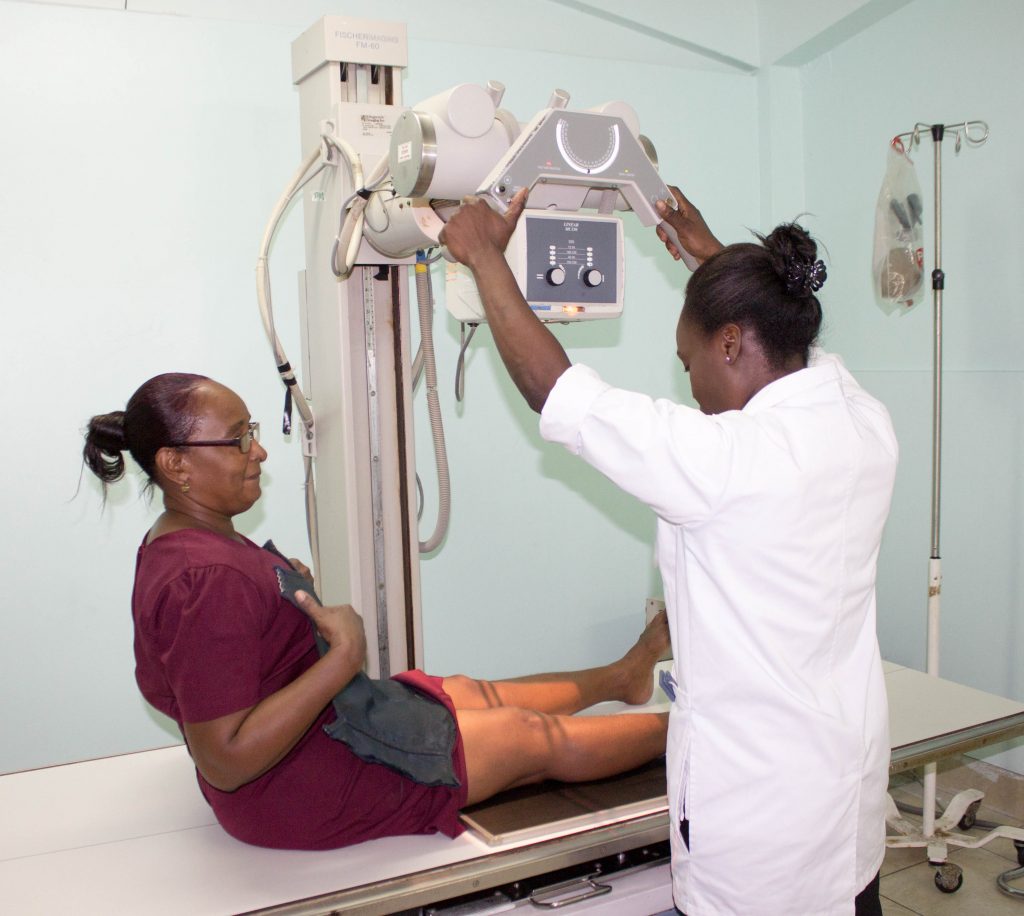X-Ray
X-RAY
An X-ray is a safe and painless procedure that’s often used to produce images of the inside of the body. It’s a very effective way of looking at fractured bones, such as a broken arm or wrist. X-rays can also be used to examine organs and identify problems. For example, an X-ray can highlight a lung infection, such as pneumonia. They are also often used by surgeons during therapeutic procedures, such as a coronary angioplasty, to help guide equipment to the area being treated. How X-rays work? X-rays are a type of radiation. They’re similar sources of energy to light. However, light has a much lower frequency than X-rays and is absorbed by your skin. X-rays have a higher frequency and pass through the human body. As X-rays pass through the body, energy particles called photons are absorbed at different rates. This pattern shows up on the X-ray images. The parts of your body made up of dense material, such as bone, show up as clear white areas on an X-ray image. The softer parts, such as your heart and lungs, show up as darker areas.


